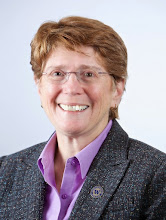
A few weeks ago, I wrote a post about the federal Fugitive Safe Surrender program and the work of June Price Tangney, a psychologist who had been interviewed in a radio story about the program. Psychological research has a bearing on crime and punishment.
I was curious about Tangney's work, so I checked out her book: June Price Tangney & Ronda L. Dearing, Shame and Guilt (2002). It's really interesting -- and it's written to be accessible to non-specialists. Tangney and her associates have studied shame and guilt in a variety of populations (children, adolescents, college students, adults), looking at correlations with behaviors and with other psychological measures.
In everyday speech, a lot of people use "shame" and "guilt" interchangeably, but the authors (and other pscyhologists) differentiate between the two. Guilt has to do with feeling bad about SOMETHING you DID. Shame is feeling bad about YOURSELF. Guilt (when it's not accompanied by shame) turns out to be adaptive: you realize you did something bad and you can then make amends or figure out a way to do better in the future. Shame is different: you feel so horrible that you can't think constructively and you often withdraw, do self-destructive things, or lash out at others.
One of the more intriguing studies described in the book looked at a group of 5th graders, their parents, and their grandparents -- and then studied them all again in 10 years, when the kids were 17 and 18.
[S]hame-proneness assessed in the fifth grade predicted later high school suspension, drug use of various kinds (amphetamines, depressants, hallucinogens, heroin), and suicide attempts. Relative to their less shame-prone peers, shame-prone children were less likely to apply to college or engage in community service.
In contrast, relative to less guilt-prone children, guilt-prone fifth graders were more likely to later apply to college and do community service. They were less likely to make suicide attempts, to use heroin and to drive under the influence of alcohol or drugs, and they began drinking at a later age. Guilt-prone fifth graders were less likely to be arrested, convicted, and incarcerated. In adolescence they had fewer sexual partners and were more likely to practice "safe sex" and use birth control.
These links . . . remained robust, even when we controlled for family income and mothers' education. . . . Moreover, these findings held even when controlling for children's anger [in fifth grade].
Id. at 135. The authors devote four pages at the end of the book to implications of their research for the criminal justice system. They support restorative justice programs (using "active participation by the victim, the offender, and the community with the aim of repairing the community,"
id. at 192). They point to innovative programs of "cognitive-behavioral interventions" with inmates to encourage "appropriate experiences of guilt" and "constructive motivations to repair or make amends" and cut down the maladaptive shame (
id.).
The authors strongly disapprove "shaming" sentences -- e.g., the sentences that require the offender to walk through town with a sign saying what he or she did.
Id. at 193. And given their findings about shame leading to negative behaviors, their disapproval makes a lot of sense.
In a final note, the authors point out that "[a]pects of the incarceration experience itself may provoke feelings of shame and humiliation . . . . [P]articularly when punishment is perceived as unjust, such feelings of shame can lead to defiance and, paradoxically, an increase in criminal behavior. . . . A thoughtful examination of the prison environment and policies could substantially reduce the shaming, humiliating potential of life behind bars, shifting the emphasis toward values of responsibility and community."
Id.

